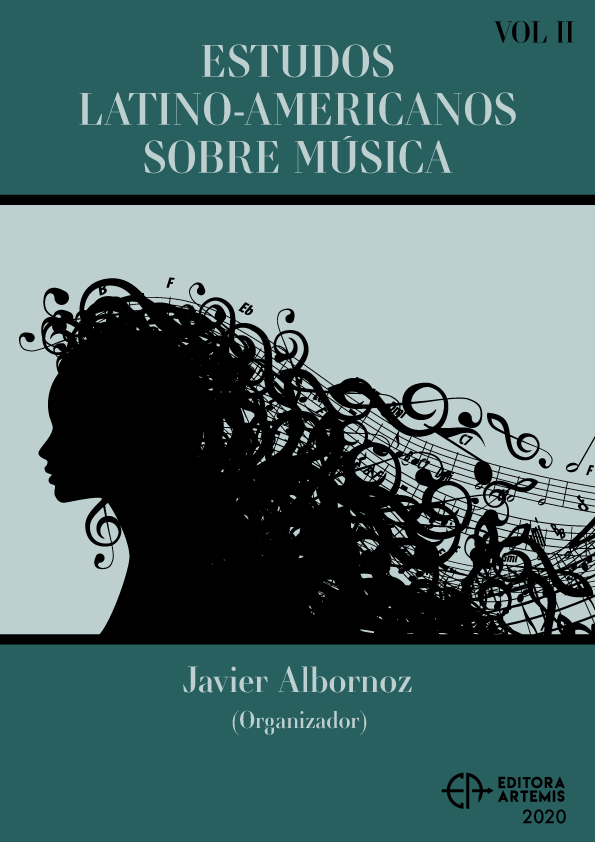
IDIOMA E SONORIDADES DO REPINIQUE: PROPOSTA DE UMA ESCRITA MUSICAL
O repinique é o instrumento que lidera toda a execução em uma performance de uma Bateria de Escola de Samba. Apesar de inicialmente ter a função de condução rítmica é muito utilizado na realização de convenções que demandam enorme criatividade na elaboração de arranjos. “Ele dá o ritmo, andamento, e também é usado para puxar as paradinhas”. (FARIAS, 2010: 79). Os executantes mais proficientes são chamados de primeiros ripa e trabalham sempre em parceria com o Mestre e os Diretores de Bateria. Esse alto nível de importância pode ser demostrando pelo fato de que é o único naipe para o qual é realizado um concurso específico chamado Ripa de Ouro, onde é escolhido o melhor executante dentre as várias Escolas. “É um instrumento solista cuja capacidade de improvisação do executante é essencial” (BOLÃO, 2003: 62). Resulta que inúmeras técnicas e sonoridades são utilizadas para que o instrumentista possa realizar suas funções de maneira adequada, bem como se expressar com a maior criatividade possível. Analisando-se vários trabalhos sobre o tema, observamos que os sistemas notacionais comumente utilizados sequer representam, de forma básica e coerente, os padrões rítmicos mais essenciais à execução musical do instrumento nas Baterias. Sendo assim, muito menos ainda é apresentado com relação às diversas sonoridades e técnicas atualmente utilizadas. Com base nisso, realizaram-se então pesquisas de campo atuando-se como instrumentista em diversas Baterias de São Paulo e do Rio de Janeiro, assim como gravações e apresentações externas realizadas pelas Escolas. Outro recurso utilizado foi a investigação através da coleta de informações em entrevistas com os sujeitos participantes dessas Baterias. Com base no material levantado, o trabalho propõe então uma notação que nos parece ser mais coerente e eficiente com relação ao uso contemporâneo do instrumento, tanto naquilo que se refere à sua diversidade sonora como técnica, mostrando padrões - geralmente chamados de levadas - mais comumente utilizados, assim como suas respectivas variações. Para isso, diversos sistemas notacionais foram averiguados de maneira a selecionar um ponto de partida para o desenvolvimento de um sistema mais eficiente. Neste sentido, os modelos apresentados por Carlos Stasi, e que foram amplamente utilizados em diversos Métodos de Pandeiro na última década, mostraram-se como os mais adequados para nossa adaptação e ampliação.
IDIOMA E SONORIDADES DO REPINIQUE: PROPOSTA DE UMA ESCRITA MUSICAL
-
DOI: 10.37572/EdArt_1321009206
-
Palavras-chave: Repinique. Bateria de Escola de Samba. Sonoridade. Notação.
-
Keywords: Repinique. Bateria of Samba School. Sonority. Notation
-
Abstract:
The repinique is the instrument that leads the entire performance in a performance of a Bateria of Samba School. Although initially having the function of rhythmic driving, it is widely used in the realization of conventions that demand enormous creativity in the preparation of arrangements. "It gives the rhythm, tempo, and is also used to pull the paradinhas". (FARIAS, 2010: 79). The most proficient performers are called first clapboards and always work in partnership with the Master and the Bateria Directors. This high level of importance can be demonstrated by the fact that it is the only suit for which a specific contest called Ripa de Ouro is held, where the best performer among the various Schools is chosen. “It is a solo instrument whose improvisational capacity is essential” (BOLÃO, 2003: 62). It turns out that innumerable techniques and sounds are used so that the instrumentalist can perform his functions properly, as well as express himself with the greatest creativity possible. Analyzing several works on the theme, we observe that the notational systems commonly used do not even represent, in a basic and coherent way, the rhythmic patterns most essential to the musical performance of the instrument in the Drums. Therefore, even less is presented in relation to the various sounds and techniques currently used. Based on this, field research was carried out, acting as an instrumentalist in several batteries in São Paulo and Rio de Janeiro, as well as recordings and external presentations made by the Schools. Another resource used was the investigation through the collection of information in interviews with the subjects participating in these batteries. Based on the material surveyed, the work then proposes a notation that seems to be more coherent and efficient in relation to the contemporary use of the instrument, both in terms of its sound and technical diversity, showing patterns - generally called levadas - most commonly used, as well as their respective variations. For this, several notational systems were investigated in order to select a starting point for the development of a more efficient system. In this sense, the models presented by Carlos Stasi, and which have been widely used in several Pandeiro Methods in the last decade, have proved to be the most suitable for our adaptation and expansion.
-
Número de páginas: 9
- Rafael Y Castro
- Carlos Stasi

